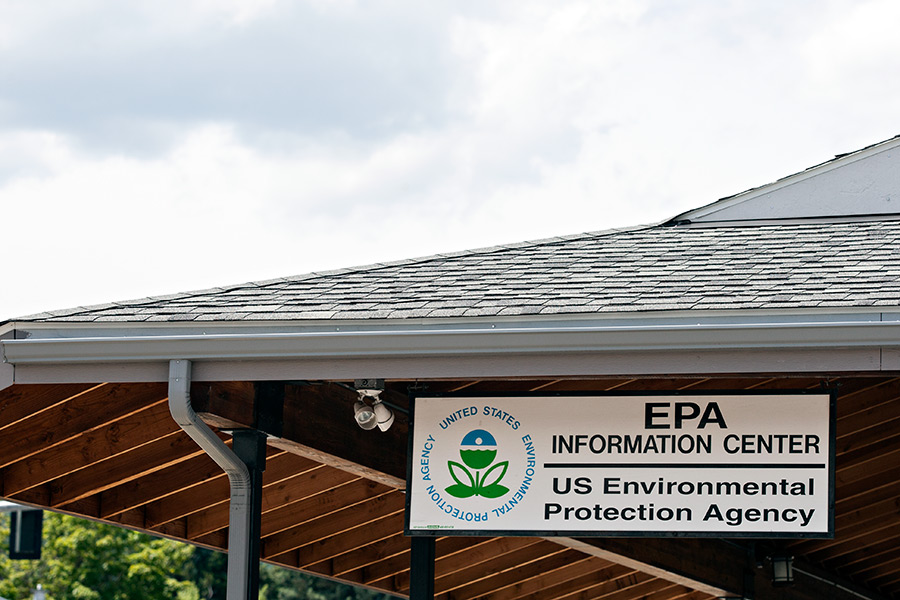The U.S. Environmental Protection Agency this week recognized the community of Libby for its collaborative work cleaning up contamination from the former W.R. Grace vermiculite mine, which was designated a Superfund site in 2002 due to widespread asbestos contamination that sickened thousands and killed hundreds of residents in the Northwest Montana town.
To date, EPA has investigated more than 8,100 properties and as of mid-November 2018, has completed the last of more than 2,600 scheduled property cleanups located within Libby and Troy. These cleanups required the removal and replacement of more than a million cubic yards of contaminated soils, according to EPA officials.
The cleanup would not have been possible without the cooperation and support from Lincoln County residents.
“This is an incredibly resilient community and I am honored to recognize those who have made a difference, especially throughout the Superfund redevelopment efforts,” Doug Benevento, EPA Regional Administrator, stated in a press release. “As this 19-year-long cleanup draws to a close, we are here to thank local and state agencies and organizations and community members alike for their hard work, perseverance and for envisioning a vibrant community.”
According to the EPA, the Superfund program remains a priority to fulfill the agency’s core mission of protecting human health and the environment. However, during the course of next year, the final phase of the cleanup will be closed out and long-term operations and maintenance of the site will transfer to the state of Montana in 2020.
EPA also began working with the city of Libby in 2009 to see how cleanup work at W.R. Grace’s former export plant could support beneficial reuse in this area. The 17-acre former plant site along the Kootenai River was used by W.R. Grace to store asbestos-laced vermiculite before it was shipped.
According to EPA, the community of Libby came together with EPA, the Montana Department of Environmental Quality, Lincoln County, as well as other federal and state partners and community organizations to develop a coordinated approach to the area’s cleanup and redevelopment.
In 2013, Libby officially opened Riverfront Park. The park has since transformed into a crown jewel for Libby and is used for community gatherings, weddings and celebrations, including Libby’s annual Riverfront Blues festival.
Still, hundreds of people have been killed and thousands sickened following decades of exposure to asbestos from the now-shuttered W.R. Grace and Co. mine in Libby, once the lifeblood of the community as workers filled lucrative jobs mining asbestos-laced vermiculite ore, then carried the dust home on their clothes, exposing themselves and their families to the deadly fibers.
The mine closed in 1990, but more than 2,000 current or former residents of Lincoln County have been diagnosed with asbestos-related diseases, including cancer and mesothelioma, and at least 400 have died in the last decade.
The type of asbestos fibers in Libby aren’t the typical, industry-wide, corkscrew-shaped chrysotile asbestos, but rather the dart-shaped tremolite fibers, which pierce the pleural lining of lungs that inhale it, which then scar over, rendering soft, pink tissue the thickness of an orange peel.
Libby was declared an Environmental Protection Agency Superfund site in 2002, becoming one of the largest environmental cleanups in U.S. history. In 2009, former EPA administrator Lisa Jackson, along with the Department of Health and Human Services, named the town the agency’s first and only Public Health Emergency resulting from an environmental disaster.
When the EPA came to town, crews identified thousands of properties for inspection and possible cleanup. Of those, about 2,600 surpassed the cleanup criteria threshold — for instance, asbestos concentrations greater than 1 percent. Those, Cirian knew, would need to be scoured.
Another 226 properties were not tested — owners either refused or could not be located.
As the EPA prepares to take much of the area off the Superfund list, state and local agencies must come up with ways to handle future asbestos discoveries, such as when a house is renovated or an underground vermiculite deposit is found during excavation work.
That prompted Sen. Chas Vincent, R-Libby, to carry a bill during the 2017 Montana Legislature that established an oversight team as the DEQ prepares to assume management of the site by January 2020. The oversight team serves to advise the DEQ as it prepares to direct the future of the cleanup, as well as to provide better outreach and communication with the public.
Vincent’s bill also established a trust fund, an operation and maintenance account and a liaison, among other items related to the cleanup of the contaminated site.
The price tag for the cleanup in Libby surpassed $575 million last year.
